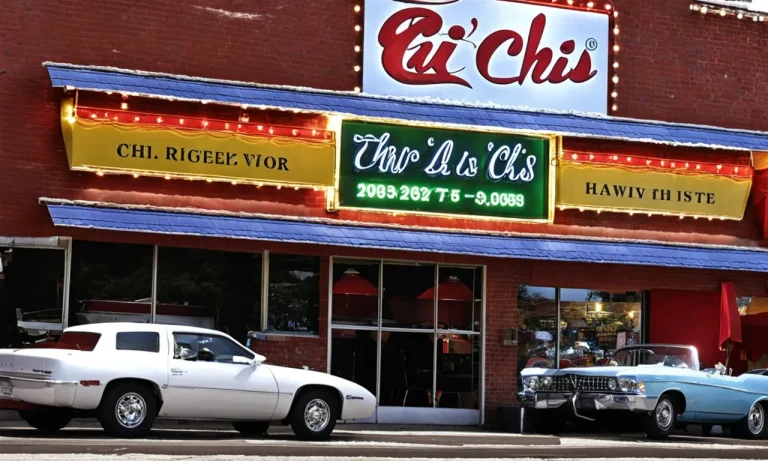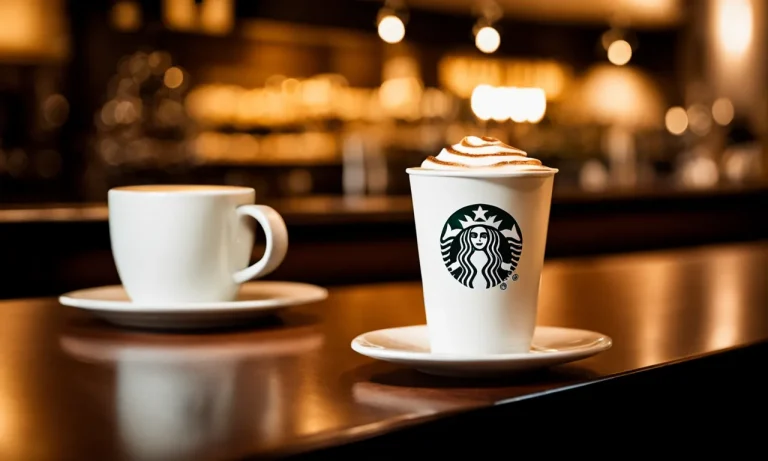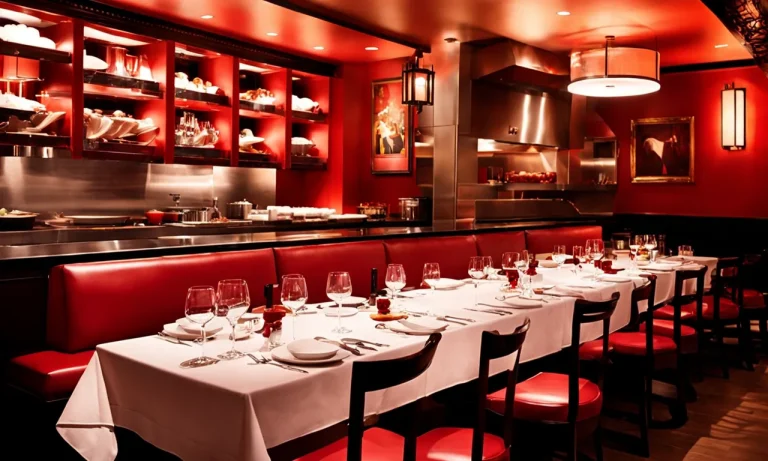Cooking delicious meals for friends and family is one thing, but operating a full-service restaurant out of your home is entirely different. If you’re wondering if you can transform your humble abode into a bustling eatery, the short answer is yes, in most cases, you can run a restaurant out of your home.
However, there are many legalities and logistics to consider before opening up your home kitchen to the public.
In this comprehensive guide, we’ll explore everything you need to know about launching a home-based restaurant. We’ll look at health codes and permits required, layout and equipment considerations, hiring staff and more.
We’ll also dive into the pros and cons of running a home restaurant so you can decide if this business model is right for you.
Laws and Permits for Home Restaurants
Running a restaurant out of your home may seem like a dream come true for many aspiring chefs and food entrepreneurs. However, before you start cooking up a storm in your kitchen, it’s important to familiarize yourself with the laws and permits that govern home restaurants.
Failure to comply with these regulations can result in fines, closure, and even legal consequences. Here are some key areas to consider:
Home Occupation Zoning Laws
One of the first things you need to investigate is whether your residential area allows home-based businesses, specifically those related to food preparation. Home occupation zoning laws vary from city to city and even within different neighborhoods.
Some areas may have strict regulations that prohibit the operation of a restaurant in a residential setting, while others may have specific guidelines you need to follow. It’s crucial to check with your local zoning authority or planning department to determine if running a home restaurant is permitted in your area.
Health Department Permits and Inspections
Ensuring food safety is paramount when running a restaurant, regardless of its location. When operating a home restaurant, you will likely need to obtain permits and undergo regular inspections from the local health department.
These inspections are carried out to ensure that your kitchen meets the necessary sanitation and hygiene standards. It’s essential to maintain a clean and organized workspace, properly store ingredients, and follow safe food handling practices to pass these inspections and maintain your permit.
Food Handler Certifications
In addition to meeting health department requirements, you may also need to obtain food handler certifications. These certifications demonstrate that you have received proper training in food safety and handling practices.
The specific certification requirements can vary depending on your location, so it’s important to check with your local health department or regulatory agency. Taking a food safety course or obtaining a food handler certification can help you gain the knowledge and skills necessary to operate a home restaurant safely.
Business Licenses and Seller’s Permits
Running a home restaurant is still considered a business venture, and as such, you may need to obtain the necessary business licenses and seller’s permits. These permits and licenses ensure that you are operating legally and paying the appropriate taxes.
The requirements for these licenses and permits can vary depending on your location, so it’s important to consult with your local government or small business administration to determine the specific requirements for your home restaurant.
While the idea of running a restaurant out of your home may be exciting, it’s crucial to understand and comply with the laws and permits that govern such operations. By doing so, you can ensure the safety of your customers, protect yourself against legal consequences, and set yourself up for success in the culinary world.
Kitchen Setup and Design
When it comes to running a restaurant out of your home, one of the most important aspects is the setup and design of your kitchen. A well-equipped and efficiently designed kitchen will not only enhance your culinary operations but also ensure the safety and satisfaction of your customers.
Equipment Needs
Setting up a restaurant kitchen in your home requires careful consideration of the equipment you’ll need. While the specific requirements may vary depending on the type of cuisine you plan to offer, some essential equipment commonly found in professional kitchens include:
- Commercial-grade stoves and ovens
- Refrigeration units
- Food processors and mixers
- Cooking utensils and knives
- Storage containers and shelving
- Dishwashing facilities
Pro Tip: Check local health and safety regulations to ensure that the equipment you choose meets all the necessary standards.
Food Storage and Safety
Proper food storage and safety practices are crucial in any restaurant kitchen, including those operated out of homes. Make sure you have adequate storage space for different types of ingredients and consider investing in temperature-controlled storage units to maintain freshness and prevent spoilage.
Did You Know? The U.S. Food and Drug Administration (FDA) provides guidelines and resources on food safety practices for restaurants. You can find more information on their website at www.fda.gov.
Kitchen Layout and Workflow
The layout and workflow of your kitchen can significantly impact the efficiency of your operations. Consider the following factors when designing your kitchen:
- Arrange your equipment and workstations in a logical order to minimize movement and maximize productivity.
- Ensure there is enough space for your staff to move around comfortably.
- Designate separate areas for food preparation, cooking, plating, and dishwashing.
- Install proper ventilation systems to maintain a clean and odor-free environment.
Fun Fact: According to a study conducted by the National Restaurant Association, a well-designed kitchen layout can improve productivity by up to 30%!
Outdoor Dining Areas
If you plan to offer outdoor dining options, consider creating a dedicated space in your backyard or patio. Make sure to comply with local zoning and licensing regulations, and provide comfortable seating, shade, and appropriate lighting for your customers.
Expert Tip: The National Restaurant Association provides valuable resources on outdoor dining setup and guidelines. Visit their website at www.restaurant.org for more information.
Operations and Staffing
HR Concerns and Hiring Staff
Running a restaurant out of your home involves various HR concerns and hiring staff to help you with the day-to-day operations. It is important to ensure that you comply with local regulations and obtain the necessary permits and licenses.
Hiring staff who are experienced in the hospitality industry can be crucial to the success of your home restaurant. Look for individuals who have a passion for food and customer service, and who are willing to work in a non-traditional setting.
Consider conducting interviews and background checks to find the right fit for your team.
Managing Inventory and Expenses
Managing inventory and expenses is an essential aspect of running a restaurant, even if it is out of your home. Keep track of your supplies and ingredients, ensuring that you always have enough to meet the demands of your customers.
Consider implementing an inventory management system to help you stay organized. Additionally, keep a close eye on your expenses, such as food costs, utilities, and any additional overhead expenses. This will help you maintain profitability and make necessary adjustments to your menu or pricing if needed.
Setting Hours of Operation
When it comes to setting the hours of operation for your home restaurant, consider your target market and their preferences. Are you catering to early breakfast-goers, lunchtime diners, or those looking for dinner options?
You may also want to consider offering delivery or takeout services to increase your customer base. It’s important to strike a balance between meeting the needs of your customers and ensuring that you have enough time for preparation and cleanup.
Marketing Your Home Restaurant
Marketing plays a crucial role in the success of any restaurant, including one run out of your home. Utilize social media platforms, such as Facebook and Instagram, to showcase your delicious dishes, share updates on your menu, and engage with potential customers.
Create a website or blog where you can provide more information about your home restaurant, including your story, the types of cuisine you offer, and any unique selling points. Consider partnering with local food bloggers or influencers to help spread the word about your restaurant.
Don’t forget to encourage satisfied customers to leave reviews and ratings online, as positive word-of-mouth can greatly impact your business.
Pros and Cons of Home Restaurants
Advantages
Running a restaurant out of your home can offer several advantages:
- Low start-up costs: One of the major benefits of setting up a home restaurant is the significantly lower start-up costs compared to opening a traditional brick-and-mortar establishment. You can save on expenses such as rent, utilities, and decor.
- Flexibility: Operating a home restaurant gives you the flexibility to set your own hours and work at your own pace. You can choose to serve meals during specific times or even offer catering services for special events.
- Personal touch: Running a restaurant out of your home allows you to provide a more personalized experience to your customers. You can create a cozy and intimate ambiance that may not be possible in larger, commercial establishments.
- Control over the menu: As the owner of a home restaurant, you have complete control over the menu. You can experiment with different dishes and cuisines, cater to specific dietary requirements, and even offer customized meal options.
- Direct customer interaction: Another advantage of operating a home restaurant is the opportunity for direct customer interaction. You can establish personal connections with your patrons, gather feedback, and make adjustments to improve the dining experience.
Disadvantages and Challenges
While running a restaurant out of your home can be rewarding, there are also some challenges to consider:
- Legal and licensing requirements: Before starting a home restaurant, it is important to research and comply with local laws and regulations. Licensing and health department inspections may be necessary to ensure the safety and legality of your operation.
- Limited seating capacity: The size of your home may restrict the number of customers you can serve at a given time. Limited seating capacity may result in longer wait times for customers, which could potentially affect customer satisfaction.
- Privacy concerns: Operating a home restaurant means opening up your personal space to strangers. This can raise privacy concerns for some individuals, especially if there is a need to separate the restaurant area from the living quarters.
- Increased workload: Running a home restaurant often means taking on multiple roles, such as chef, server, and manager. This can lead to an increased workload and the need for effective time management to ensure smooth operations.
- Competition and marketing: Compared to traditional restaurants, home restaurants may face more challenges in terms of visibility and attracting customers. Effective marketing strategies and building a strong online presence can help overcome these obstacles.
It is important to carefully weigh the pros and cons before deciding to run a restaurant out of your home. Consider your personal circumstances, local regulations, and the demands of the food industry to make an informed decision.
Conclusion
Running a home restaurant can be an extremely rewarding endeavor if you have the passion, business savvy and resources to do it right. Make sure to do your due diligence regarding all permits, codes and regulations in your area.
Invest in commercial-grade equipment and design your kitchen for optimal workflow. Manage staffing, marketing and finances closely as you get the business off the ground. While challenging, with careful planning and execution, your home cooking passion can turn into a thriving restaurant operation.






